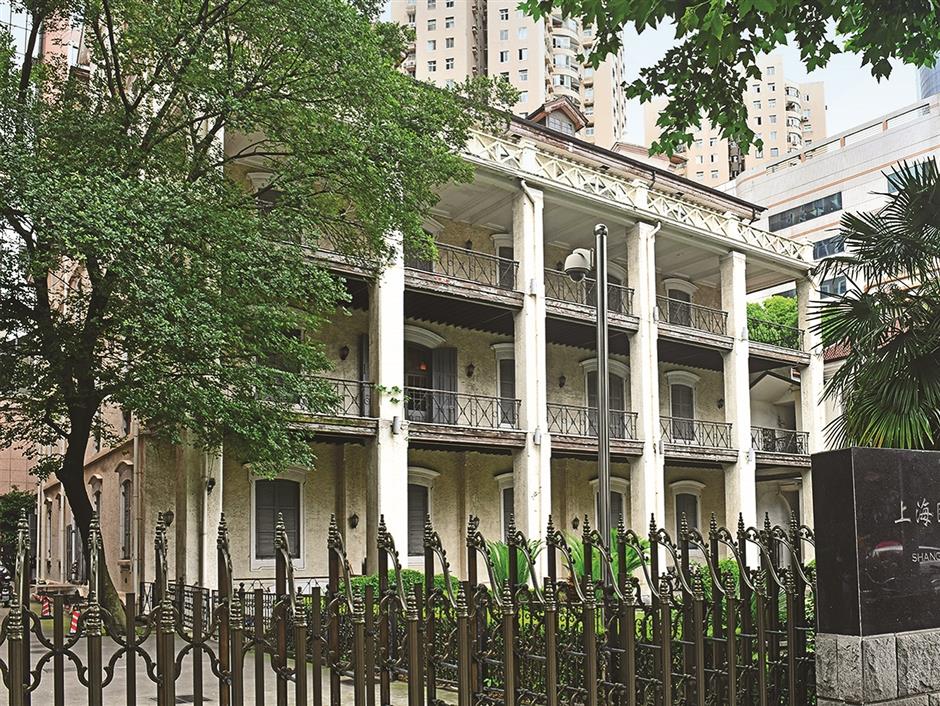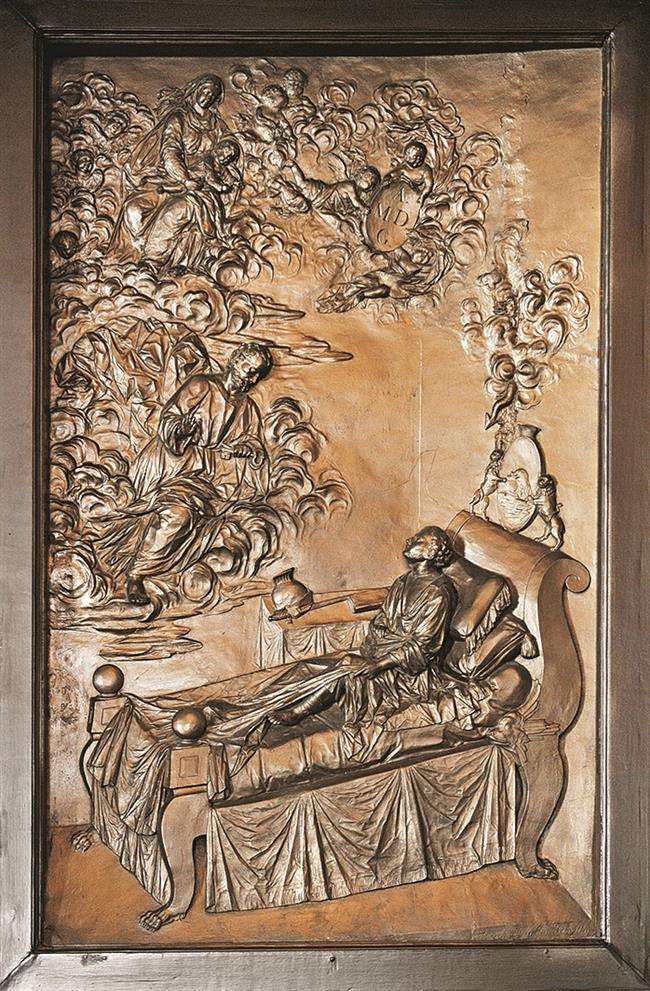今日上海
一座历史悠久的图书馆,它的过去继续定义着它的现代存在 - 2024年07月18日
A historical library whose past continues to define its modern presence
In the bustling commercial area of Xujiahui stand two modest white, Western-style buildings — structures of subtle presence that are often overlooked by passers-by unaware that they are walking past one of China’s first modern libraries.
These buildings comprise the renowned Xujiahui Library, also called the Bibliotheca Zi-ka-wei.

The architecture of Xujiahui Library showcases a blend of Eastern and Western design.
Its story began in 1847 when French Jesuit missionary Claude Gotteland purchased land in Xujiahui to build a new Jesuit seminary.
The Jesuits had a long tradition of collecting books, and those who came to China were no exception. Within the seminary, three rooms were designated for storing books and archives, marking the genesis of what would become the library.
As the collection grew, the book rooms expanded and were eventually rebuilt in 1897 into a two-story building with 13 rooms, establishing its current form. By 1906, it was officially named the Bibliotheca Zi-ka-wei after the Shanghai dialect name for Xujiahui.
The library’s architecture showcases a blend of Eastern and Western design. The north building, constructed in 1897, features a two-story structure with a gabled roof and multiple European-style arched windows with pine shutters.
The upper floor served as a Western book repository, styled after the Vatican Library, while the lower floor originally housed Chinese books and was designed in the style of the Ming Dynasty’s (1368-1644) Tianyi Library in the eastern coastal city of Ningbo.
The number six was prominently featured in the design — inspired by a principle from the “I Ching,” or the “Book of Changes” — to protect the library from fire. Electrical wiring throughout the library was encased in lead to prevent fires.
The upper floor held a vast collection of Western books in Greek, Latin, French, English and German, including encyclopedias from various countries. The lower Chinese section contained more than 100 large bookshelves. All books were stamped with “Zi-ka-wei Reservata Bibliotheca.”
In total, the library boasted around 120,000 volumes of books and 2,100 local records, along with ancient Chinese coins and vintage stamps.
The south building, initially a Jesuit residence built in 1867, was transformed into a four-story sloped-roof structure with external corridors in 1931.
Xu Zongze, a direct descendant of the famous Chinese scholar Xu Guangqi, managed the library from 1923 until his death in 1947. During China’s war against the Japanese invaders, he dedicated himself to expanding the library’s collection, with notable local chronicles becoming a key feature of the library.
Xu once told a reporter from the Ta Kung Pao newspaper that the library never denied requests for access from scholars or academic institutions, positioning it as an integral part of modern Chinese humanities and social sciences research.
Inside the library’s second-floor reading room, two large religious sculptures from the 1850s remain intact: a woodcarving of Jesuit priests taking vows before their founder and a clay sculpture depicting the death of St Ignatius. These artworks, over 170 years old, are considered masterpieces of sculpture with their intricate detail and expressive forms.

A clay sculpture depicting the death of St Ignatius
The library has long been renowned for its significant number of Christian texts and rare manuscripts, like the first editions of “De Situ Orbis” in Latin and “Travels of Sir John Mandeville” in Italian, printed in the late 15th century.
In 1956, the bibliotheca became a branch of the Shanghai Library, further expanding its service to the public.
As the library has modernized, it continues to serve as a window for Sino-Western cultural exchange, attracting scholars studying modern history, religious history and journalism. Students and scholars alike visit the library to delve into its books of wisdom and history, under gentle lamplight.
Source: Shanghai Daily
